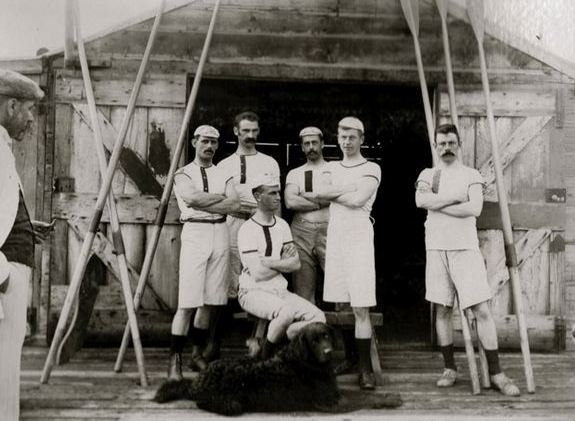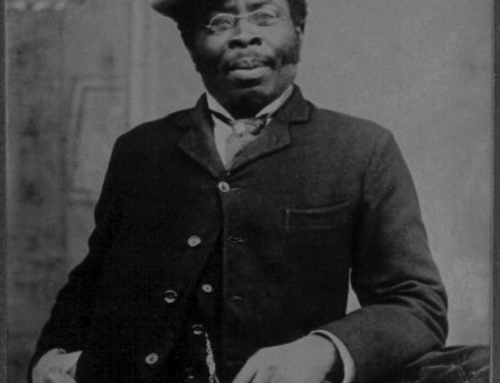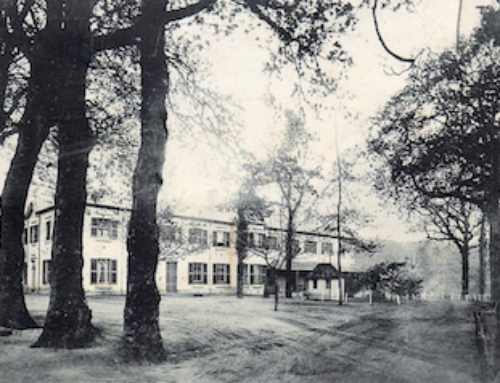 The story of RH Morris Master Builder Cape Town comes to most a surprise, a man who led the building industry In South Africa to what it is today.
The story of RH Morris Master Builder Cape Town comes to most a surprise, a man who led the building industry In South Africa to what it is today.
William J. Morris was born on the 11th February 1826 in Oxon, England, and was employed by the Duke of Marlborough as a game keeper when he developed pulmonary tuberculosis during the severe winter of 1856. His doctor recommended that he move to a sunnier climate.
Not long after this William was accepted, together with his wife and three children, for the Sir George Grey Immigration Scheme. In screening the prospective applicants, there were some basic requirements: good health, sober habits, industrious, good moral character, and in the habit of working for wages (as promulgated by Act No. 8 of 1857). From these regulations it would seem that a person with T.B. would certainly not have been accepted, and as the gentleman in question lived to the grand age of 90, and certainly worked industriously on arrival in the Cape (not conducive to a sickly person) the circumstances appear to dispel such a legend.
The journey to the Cape was aboard the vessel named “Edward Oliver” under the command of Master J. Baker. The ship departed from Birkenhead on 10th July 1858, and after 57 days at sea arrived in Table Bay on 5th September 1858. Little is known about the voyage excepting 14 deaths were recorded and seven births took place on board. Listed as the ships surgeon was Dr. Fred Johnson as well as trained teacher Mr. Tom Gibbs who were to care for the passenger’s health and education. It is possible that it was not a pleasant journey for the Morris family remembering that the three children Richard, Kate and William were still young and the latter being under twelve months of age.
The majority of the artisans and tradesmen had been fixed up with immediate employment, as there was a great demand for skilled and semi-skilled men for the new railway track being constructed from Cape Town to Wellington, as well as the harbour construction project in Table Bay.
Morris moves to Rondebosch
Not long after Williams arrival he leased some land at the top end of Duke Road in Rondebosch, then a distant suburb of Cape Town, and very reminiscent of Wychwood Forest and his native Oxfordshire. This piece of land was developed into a market garden and the family lived in a nearby cottage.
It was whilst William J. Morris and family were living in Rondebosch that on 29 April 1862 their youngest son Benjamin Charles Morris was born and baptized in St. Paul’s Anglican Church in Rondebosch, whereby his father (William) declared his occupation as a “gardener” and place of residence as “Rouwkoop Road”, Rondebosch. Click here to search these church records.
Richard H. Morris was still a growing boy of just 8 years old. By the age of 14 years and still living in Rondebosch, he was indentured to Alexander Bain, a shipbuilder/shipwright of 17 Chiappini Street, Cape Town as an apprentice carpenter/shipwright.
Although the new suburban railway from Cape Town to Wynberg had been opened to the public in 1865, Richard was obliged to walk from Rondebosch to the North Wharf in Dock Road, Cape Town as transport was too expensive for his meagre earnings. However, he was soon organized in getting a “lift” from the coachman he befriended who worked for the governor of Rustenburg House. Richard secured his free lift on the footman’s place at the rear of the coach, where he would sit in reasonable comfort for the journey which took him to the Castle. Unfortunately this mode of travel did not operate for the return journey home, nor did it operate during the winter months, so Richard just had to “jog”.
It would appear that the last train from Cape Town to Wynberg in the afternoons was scheduled for departure from the city at 5pm, but needless to say as an apprentice, Richard was still working at the shipyard. Despite the arduous circumstances of his youth, the enforced exercise proved most beneficial a few years later when he entered into competitive sport i.e. race rowing, especially as Richard was just over 5ft. tall and weighed less than 60 kilos.
During 1870, the Bain’s Shipyard was taken over by Mr. Christopher Robertson, as specialist in sailing ships and wooden masts, and as Richard was learning his trade with three other young apprentices, he was taught the art of shaping a sailing vessel’s mast with the hand spokeshave. The firm from then on was known as “Robertson & Bain” which continued operating in Dock Road, Cape Town for several decades, specializing in the supply of wooden masts for sea-going sailing ships.
Before carrying on with the life story of Richard H. Morris it is important to mention that the Anglican Church of St. Johns on the corner of Long and Waterkant Street had been built in 1856. It was at this church that during the 1860’s Richard became a choir boy and in 1872 a Sunday School Teacher.
In 1876 the Templar rowing club started in Cape Town where Richard and his brother were both members and enthusiastic oarsmen.
The christening of the personally constructed fast rowing boat by Richard came as no surprise by the owners of Robertson and Bain. The name of the boat was called the “Alpha”.
In 1882 the construction of a row of cottages built by Wm. J. Morris and his brother Richard (father’s son) was started in Upper Church and Longmarket Streets and were to be called “Lorne Cottages” in honour of the Lorne Rowing Club which was started in Cape Town in 1875 and named after the Scottish Firth near Island of Mull of Kintyre.
On Saturday 6th June 1885 Richard married Helen Ann Lyell in St. John’s church. The newly married couple went that day to “Lorne Cottages” to make their permanent home and raise a family.
Helen was in fact a little girl of ten years old when she first encountered Richard. That was when he was in his twenties and he was late for work and was running along the road when he accidentally knocked over a little girl. He tried to console her, and from this time onwards a very special friendship developed.
It was in the same church that Richard’s younger brother William John married Matilda Jane Altree on 25th August 1886 and a younger brother married in St. Paul’s in Rondebosch on 14th September 1887. It is interesting to note that St. John’s Church was deconsecrated after the last evening service in June 1970 as the ground and building was sold, after much pressure from business interests, for an astronomical amount, and the church was completely demolished to make way for the present modern commercial complex known as “St. Johns Place”. Click here to search these church records.
In 1884 Richard Morris as cox and his brother of the “Templar Club” had their first win as champions winning both “Maiden Oarsmen” and “Championship of Table Bay” events.
In June 1878 Richard H. Morris went into partnership with friend & neighbour Chas. Algar from Rondebosch, who had known the Morris family for quite some time. Little known to Chas was that Richard was to be the future brother-in-law to his sister Bertha Algar.
The first workshops of Algar and Morris were at 39 Shortmarket Street, Cape Town. (Between Long and Loop Street). But misfortune was the cause of the break-up of the working partnerships as the 30-year-old Chas Algar died suddenly on 4th October 1883.
Banking institutions were now playing a major role in the economy of the country and in 1883 Richard Morris landed the contract to build the Standard Bank in Adderley Street for the amount of £32,000 – the two storied building was designed in neo-classical style by Charles Freeman. Two additional floors were added on by Morris in 1921.
Richard made a repeat performance in May 1885 wining the 2 mile race in 15 minutes and 55 seconds.
March 1886 saw the arrival of Richard and his wife Helen’s daughter Kate as well as Richard wining the “Champion of Table Bay” for the third consecutive year.
Eleven years after the death of Chas Algar, Richard Morris secured the construction contract for the new City Club in Queen Victoria Street for a sum of £22,000.
Between the years of 1888 and 1895 Helen Morris gave birth to Edith, Bertha and William Henry Morris, the only son to Richard.
Groote Schuur destroyed by Fire
By 1896 Richard H. Morris had become known as a builder of distinguished quality and workmanship and the fame of R.H. Morris had spread. Herbert Baker had met Richard on several occasions and took immediately to this man who built with such fine quality and precision. It was then that R.H. Morris secured the prestige contract for the restoration of “Groote Schuur”, after the building had been extensively destroyed by fire.
Richard H. Morris by 1899 had workshops in both 52 Rose Street and 173 Longmarket Street. In 1902 Frank Lardner joined the staff of R.H. Morris and in 1911 he became the manager.
Father, William James Morris, died at the old age of ninety years on 22 March 1915. In 1919 the company of R. H. Morris (Pty) Ltd was officially formed to cope with the new lumber contract in Knysna. It was from this time onwards that R.H. Morris was renowned throughout Southern Africa for the excellent workmanship and quality in carpentry all starting from old Mr. Morris himself. School desks, church pews and altars were manufactured in their joinery shop for years to come. The items were delivered as far away as Botswana, Rhodesia, Zambia and Mozambique. Along with the desk and school equipment Morris ink wells and stands were also produced.
The Morris workshop also manufactured one of the very few original gramophones that were ever produced in South Africa and which was called a “melophone”. Many of these items can be seen on display in the Educational Museum in Aliwal Road, Wynberg today.
Sadness unfortunately halted joy when Richard and Helen Morris celebrated their Golden Wedding Anniversary on 6th June 1935 and then on 24 July Helen tragically passed away at home as well as Bertha, wife of Benjamin Morris, on the 6th December.
Richard at the age of 83 years old in 1936 retired from the construction industry and handed the reigns over to Frank Lardner. Frank ran the company until 1942 when he passed away. The business was then handed over to a young civil engineer, Clifford Harris. The existing premises of Rose and Longmarket Street were finally vacated when the furniture workshops and Building /Civil Engineering were consolidated and new premises built in Ndabeni.
In April 1949 Richard Henry Morris succumbed to natural causes and passed away at the age of 95 years and 5 months.
This was certainly not the end of an era for R.H. Morris Pty Ltd – as in 1952 the company was given financial backing for the New Municipal Market at Epping in Cape Town by the British Engineering giant Humphreys. The firm is no longer associated with the family. Later the company was taken over by the Fowler Group and is now in the hands of Group Five Construction who have retained the image of the name in perpetuating the fine record of the founder Richard Henry Morris.
Many of the other buildings in Cape Town which were either completed by or alterations were performed on, include the University of Cape Town, Diocesan College in Rondebosch, Music School at U.C.T. as well as many Sir Herbert Baker buildings.
In 1995 when much of this research was done I managed to find a second “melophone” and an original “Morris” desk for sale which ex-Managing Director Frank Wright was extremely grateful for me finding these wonderful company artefacts. Shortly before the final documents were found I also located the grandnephew of R.H. Morris who very kindly gave me the medal won by Richard in the “Championship of Table Bay”. This is now on display in the boardroom of Group Five Construction in Plum Park, Plumstead in the Cape.
Authors: Heather MacAlister and H.W Haddon





